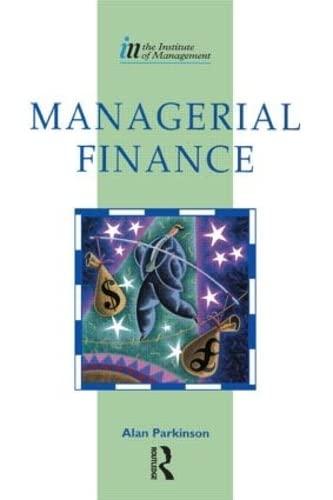Question
Consider the following cash flows for Projects A and B, which are mutually exclusive: Year Project A Project B 0 -$4,000,000 -$4,000,000 1 2,000,000 1,000,000
Consider the following cash flows for Projects A and B, which are mutually exclusive:
| Year | Project A | Project B |
| 0 | -$4,000,000 | -$4,000,000 |
| 1 | 2,000,000 | 1,000,000 |
| 2 | 1,500,000 | 1,500,000 |
| 3 | 1,250,000 | 1,700,000 |
| 4 | 1,000,000 | 2,400,000 |
The cost of capital (used as the hurdle rate) for both projects is 10%. What is the net present value (NPV) of project A?
Select one:
A. $680,008.20
B. $506,748.15
C. $400,000.55
D. None of the above
You are the CFO of a small software firm that has to make a choice between two mutually exclusive capital investment projects. Your firm earned an average return of 28% on its projects last year, while its cost of capital was 12%. Would you expect NPV or IRR to be the better investment decision rule for your firm?
Select one:
A. NPV, because it is more intuitive than IRR.
B. IRR, because it clears the hurdle rate more easily than NPV.
C. NPV, because it uses a more realistic reinvestment rate assumption than IRR.
D. IRR, because it is a better indicator of value creation than NPV.
Step by Step Solution
There are 3 Steps involved in it
Step: 1

Get Instant Access to Expert-Tailored Solutions
See step-by-step solutions with expert insights and AI powered tools for academic success
Step: 2

Step: 3

Ace Your Homework with AI
Get the answers you need in no time with our AI-driven, step-by-step assistance
Get Started


